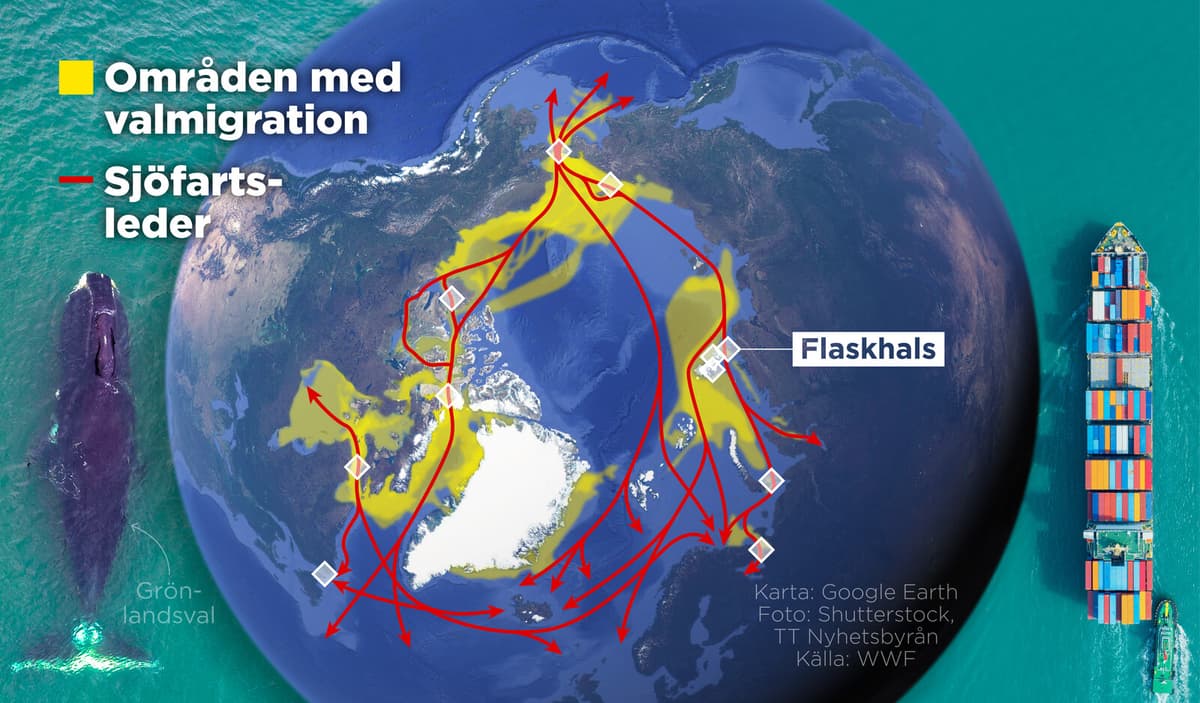Every year, the Arctic is visited by around a quarter of the world's whale species. Three of them – the beluga, narwhal, and bowhead whale – live in the region year-round.
They have not been exposed to much ship traffic, since the Arctic has largely been covered by sea ice until recently, says Melanie Lancaster, Arctic expert at WWF.
Loud Ships
WWF has mapped the migration routes of the three whale species, mainly during the spring and autumn, the so-called blue corridors. There, they are now increasingly accompanied by ships, which, as the ice melts earlier and freezes later due to climate change, are seeking new shipping lanes in the Arctic.
Besides the risk of ships colliding with whales and causing them harm or death, the ships also generate noise, which can disrupt the whales' ability to hear, as hearing is their primary sense underwater.
It affects their ability to listen to each other, navigate, find food, and protect themselves from predators, says Lancaster.
Triple Win
WWF urges shipping companies to avoid the blue corridors, especially during the times when whales use them the most, during spring and autumn.
In certain bottlenecks, such as the Kara Strait, Hudson Strait, and Bering Strait, where ships and whales must converge, ships should reduce their speed to 10 knots. Slower speed is a triple win, according to WWF.
If the ship goes slower, it's quieter, and they're also more fuel-efficient – a major win for reducing greenhouse gas emissions. And if they're slower, the risk of fatal collisions with whales decreases significantly, says Melanie Lancaster.
WWF has mapped the migration routes – the blue corridors – of the Arctic whale species beluga, narwhal, and bowhead whale. The visualization was made possible with the help of open data from satellite tracking and knowledge from indigenous peoples in the area.
In several places, the corridors overlap with other whale species that visit the Arctic during the summer half-year. To a large extent, the migration routes also overlap with ship traffic, which is increasing in the Arctic.
Source: WWF





